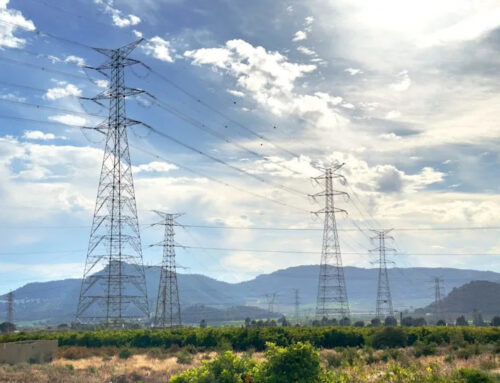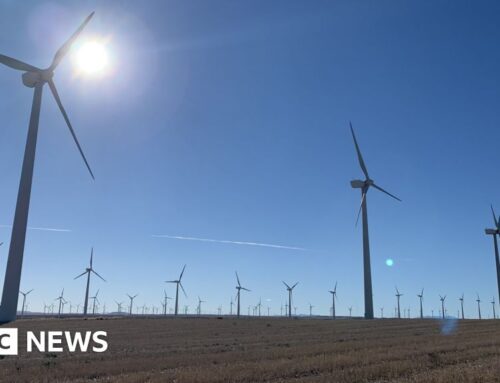Apple shares face more pain as Trump’s tariff threat looms
May 27, 2025
Apple Inc. shares are coming off their longest selloff in more than three years, as escalating attacks from the White House threaten to further erode the company’s profit outlook, suggesting the stock’s struggles this year are far from over.
President Donald Trump on Friday threatened to levy a 25% tariff on the company’s products if it doesn’t shift iPhone production to the US. Shares fell 3% to end the week, their eighth straight negative session, the longest such selloff since January 2022.
Some analysts are skeptical that the tariffs will come to pass, but any movement in this direction will put the company in a position where it either has to absorb the higher costs, weighing on its earnings and margins, or pass along higher prices to consumers, which could erode demand at a time when Apple is already struggling with tepid growth and difficulties with its artificial intelligence offerings.
“The threat may be politically motivated but markets can’t ignore the headline risk,” said Haris Khurshid, chief investment officer at Karobaar Capital. “This kind of tariff rhetoric, even if it never materializes, chips away at investor confidence. You can’t run a $3 trillion company with a trade grenade hanging overhead.”
 ETMarkets.com
ETMarkets.comApple is the worst-performing Magnificent Seven stock this year, and its 2025 drop of 22% stands in stark contrast to the 0.5% decline of the Nasdaq 100 Index. The stock has broken under key moving averages, but isn’t yet at the level that would indicate oversold conditions, based on its 14-dayrelative strength index. The CBOE Apple VIX, which tracks a market estimate of futurevolatilityfor the stock, jumped more than 30% last week.
The stock has endured political and tariff-related swings, though Friday’s selloff was far milder than Apple’s drop after the initial announcement of tariffs in April, when the stock underwent historic volatility, including its biggest four-day drop since October 2000.
The Trump administration subsequently walked back several of its more extreme tariff pronouncements. It exempted key categories of electronics — including smartphones and computers — from its so-called reciprocal tariffs, while the US and China agreed to temporarily lower tariffs on each other’s products.
“It would be probably a surprise to most investors if this actually happens,” Matt Stucky, chief portfolio manager of equities at Northwestern Mutual Wealth Management, said. He added that Friday’s move in Apple shares underscored this point: if investors believed the 25% rate will be enforced, traders likely would have sent the stock down further.
Trump’s quickly evolving position was on display on Friday when, a few hours after taking aim at Apple on social media, he said the 25% tariff would apply to all foreign-made smartphones. Ironically, this could be to Apple’s benefit, according to JPMorgan analyst Samik Chatterjee, who said that if all competitors in the industry face the same hurdle, “Apple’s pricing power with consumers as well as suppliers would position the company favorably relative to peers, rather than at a disadvantage.”
Still, the situation is difficult for Apple because it has few obvious recourses to appease Trump. The idea of fully domestic iPhone manufacturing is “a fairy tale that is not feasible,” according to Wedbush analyst Daniel Ives. Given the complexity of Apple’s supply chain — including materials, assembly, labor, and machinery — Bloomberg Intelligence estimated it would take several quarters to move iPhone assembly to the US. Last month, Bank of America calculated that iPhone costs could rise 90% or more if they were made in the US.
Apple was reportedly already considering price increases, though trying to avoid the perception they were related to tariffs, as Trump has also attacked companies that have raised prices due to the levies.
Estimates vary on how significant tariffs could be to Apple. Bloomberg Intelligence estimated they “might cut gross margin by 300-350 bps for fiscal 2026,” while Citigroup analyst Atif Malik estimated “about 130 bps incremental gross margin impact, or 4% incremental EPS impact in FY26.”
Wells Fargo Securities analyst Aaron Rakers is skeptical tariffs will materialize, but said Apple would have to raise prices by $250-$300 per iPhone in order to maintain gross margins. Ives at Wedbush said iPhones would cost about $3,500 if made in the US.
Analysts have been trimming their estimates on account of the uncertainty. The consensus for Apple’s net 2026 earnings has dropped by 5.1% over the past three months, while the view for revenue is down 3.9% over the same period.
Further cuts to estimates would have the effect of making the stock appear more expensive by shrinking the denominator in the price-to-earnings ratio. Apple currently trades around 26 times estimated earnings, above its 10-year average, and more than megacap peers that are expected to grow faster. The combination of a higher multiple and slower growth suggests a difficult setup, even outside of the tariff situation.
“We’re in that ugly space because it’s a bit of a no-win situation right now,” said Brian Mulberry, a client portfolio manager at Zacks Investment Management. “There is probably a point where you can see the price becoming attractive enough for long-term investors,” but the valuation and uncertain backdrop means it isn’t there yet.
(You can now subscribe to our ETMarkets WhatsApp channel)
Search
RECENT PRESS RELEASES
Related Post



